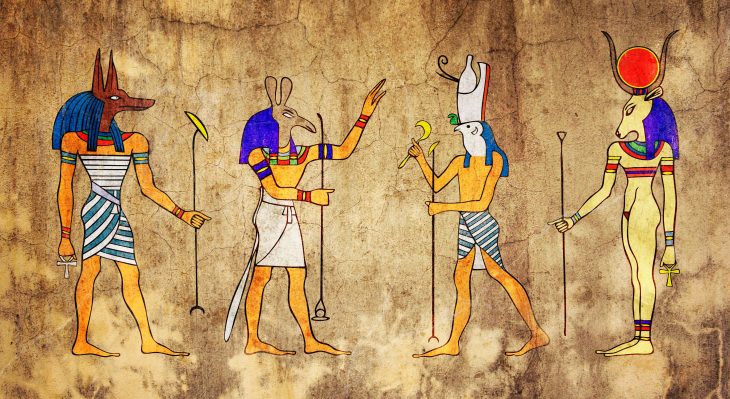
Worship of the ancient Egyptian gods and goddesses ended millennia ago, but their memory lingers in human culture and history. In fact, many of them have become iconic not just in occult groups, but even in popular fiction. Learn more about these mystical deities with these facts about ancient Egyptian gods and goddesses.
- Archaeologists have listed over 1,500 different ancient Egyptian gods and goddesses.
- The ancient Egyptians also considered their Pharaohs as gods in human form during their reigns.
- Part of the Pharaoh’s role included managing each temple in his kingdom.
- They also officially reserved the right to directly interact with the divine.
- Most ancient Egyptians lived ignorant of the details of their deities.
- Oral traditions about ancient Egyptian gods and goddesses go back to prehistoric times.
- The oldest written records about ancient Egyptian gods and goddesses go back to around 3100 BC.
- Ancient Egypt’s priests and scribes reserved religious knowledge for themselves.
- The Old Kingdom between 2686 BC and 2181 BC saw the peak of the Pharaoh’s religious power.
- Both the Middle Kingdom and the New Kingdom saw a reduced emphasis on the Pharaoh’s divinity.
- Pharaoh Amenhotep IV, also known as Akhenaton, tried and failed to restore Pharaoh’s religious supremacy between 1353 BC and 1334 BC.
- The Pharaohs completely lost their religious power by the end of the New Kingdom.
- Ptolemy I Soter’s new Ptolemaic Dynasty saw a revival of the Pharaoh’s religious power from 305 AD until the Roman Conquest in 30 BC.
- Christianity’s spread led to the end of millennia of worship for ancient Egyptian gods and goddesses.
- Archaeologists first rediscovered the ancient Egyptian gods and goddesses during the 19th century.
- Ancient Egyptian gods and goddesses supposedly had bodies of gold and blood of silver.
- They also had shapeshifting abilities.
- Ancient Egyptian gods and goddesses could only punish misuse of free will, and not take it away.
- They also had fixed roles and a shared duty to uphold the cosmic order.
- Foreign deities could also receive official recognition from the Pharaoh.
Was this page helpful?
Our commitment to delivering trustworthy and engaging content is at the heart of what we do. Each fact on our site is contributed by real users like you, bringing a wealth of diverse insights and information. To ensure the highest standards of accuracy and reliability, our dedicated editors meticulously review each submission. This process guarantees that the facts we share are not only fascinating but also credible. Trust in our commitment to quality and authenticity as you explore and learn with us.
